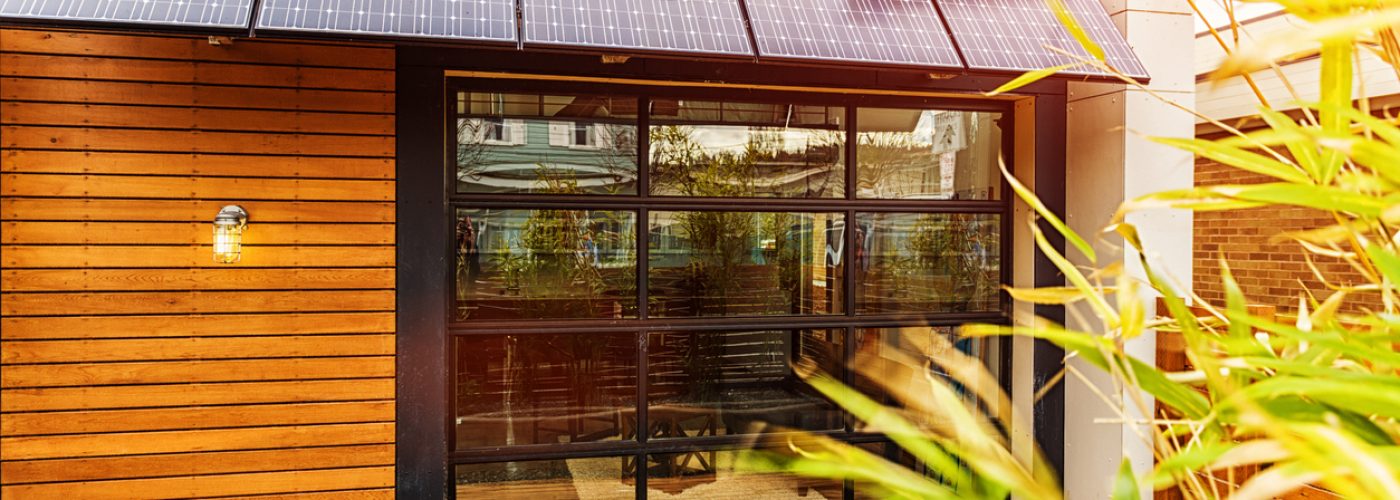There is more pressure on today’s building technology and innovation than ever before: with climate change being forever the hot topic, there’s no doubt that the design and construction sector has had to make an extra effort to stay ahead of the trends and developments within the ever-changing industry.
With many existing buildings undergoing green or environmentally-friendly reconstruction, almost all new builds make considerable energy-efficient achievements. This is largely due to a combination of both client demands and strict regulations. In recent years, we’ve seen a number of highly impressive green building examples: One Angle Square in the UK makes use of rainwater harvesting and solar power; the Bamboo Skyscraper in Singapore impressed us all with its bamboo build; and BetZed, a wonderful community example of green architecture. Not only this, but there are also many people shaping cities worldwide and recording their stories while doing so, and countless communities and organisations for inspiration and assistance.
Luckily, the industry is coming on in leaps and bounds. There are a number of new, cutting-edge technologies used to create products that have played a large role in this recent surge in green design:
Textiles by Designtex
Textile waste is gradually gaining more and more airtime – not only in terms of fashion, but construction too. The Designtex ecological fabrics are particularly well-suited to commercial use. Created with sustainable production in mind, the applied material company does a lot of interesting collaboration and partnerships that are paving the path in green design.
Energy-Harvesting Wallpaper by Imperial College London
A team from Imperial College London recently created an extra thin solar panel wallpaper by printing with cyanobacteria, which uses photosynthesis to create electric energy from sunlight. This astounding discovery could be used to power medical and environmental sensors.
Legend Valve HyperPure Piping
HyperPure is strong and resilient piping that is easy to install and, most importantly, is 100% recyclable. The potable tubes are made from bi-modal polyethylene and provide a cost-effective solution to water pipes. Best of all, they don’t leave any chemical tastes in your drinking water.
SolaReflect Nippon Paint
Despite the recent controversy surrounding the eco-friendly nature of specific paints, there are a number of paints serving eco-friendly purposes. SolaReflect Nippon Paint plays a very important role in how a building deals with the build-up of heat. Although this may not be a pressing problem in the UK, in places like Asia, it can certainly be. SolaReflect diverts infrared heat and therefore encourages savings on cooling energy costs.
3D Printing
A non-profit organisation called ICON is responsible for one of the latest and most ground-breaking developments in design and construction. By using 3D printing, the team aims to create affordable housing for the 1 billion plus homeless people in the world. The houses can reportedly be built in just 24 hours and ICON hopes to build them for less than $4,000.
Spray-On Solar Cells
With solar power and other renewable energy sources, the world can cut off the rising demand for electricity from traditional fuel sources. The continuous research on making solar power more affordable will pay off with cleaner air and environment for everyone. One of the ways to make solar energy more affordable is by adopting spray-on solar cells, which use the thin film deposition technique.
According to Renewable Energy World, a “British company aims to have a thin-film perovskite solar cell commercially available by the end of 2018.” A perovskite is a type of solar cell that can be mixed into liquid solutions and can be applied to a number of surfaces.
Spray-on solar cells have nanoparticles that are excellent for absorbing light and conducting electricity. Phosphorus and zinc make up these nanoparticles, wherein manufacturers combine them into a liquid. The liquid is then sprayed on solar cells.
This technology is more cost-effective because it doesn’t use expensive silicone. Instead, spray-on solar cells are made of a plastic compound. Also, the installation is quicker than their traditional counterparts.
Other thin film deposition methods are available to create innovative green buildings. You may learn more about thin film deposition for solar panels in this article by Korvus Technology.
Conclusion
Because of advancing green building technologies, it’s now possible to create residential and commercial infrastructures that generate less carbon. When everyone embraces these innovations, the positive environmental impacts are enormous.
It’s time to rethink how property owners and contractors build modern houses and buildings by adopting the above green building technologies.





